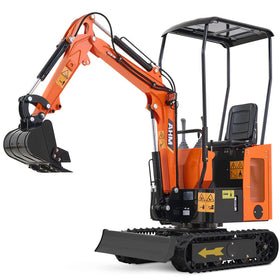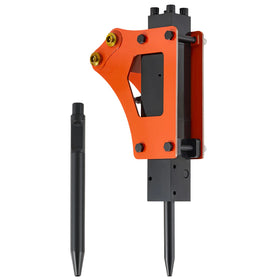When you buy a good-quality lawnmower and use it properly, it should last you for many years. However, even with the best care, you can expect some malfunctions and breaks from time to time. Don’t worry, this is perfectly natural, and in most cases, you can fix these issues yourself. In this article, you can perfect a lawn mower repair in 5 simple steps, so keep reading.

Identifying Common Lawnmower Issues
To start with, let’s look at the most common lawnmower issues. For instance, one such issue occurs when your lawnmower can’t start, no matter what you try. There could be several issues causing this: dirty or faulty spark plugs, clogged air filters, lawn mower belt issues, or no fuel.
Insufficient or bad fuel can also cause your lawnmower to stall even after you have managed to start it. Additionally, if you notice your lawnmower is spending too much fuel, the air filter might be dirty, or you might be using the wrong type of fuel.
If you are hearing unusual noise, check if the blades have become loose. However, this could also be a sign of a faulty engine. Clogged or damaged blades could also cause uneven cutting. If you feel resistance when pushing the lawnmower, the issue could be in tires or wheels.
Finally, don’t ignore smoke coming from your lawnmower or an unpleasant, burning-like smell. This is usually caused by a clogged air filter, a dirty engine, or an oil leak. Make sure to address this issue before it grows into a much larger problem.
5 Steps For Lawn Mower Repair

In most cases, you don’t need any special equipment or high levels of knowledge when trying to repair a broken lawn mower. Simply follow the steps below:
Step 1: Inspect Your Lawn Mower
Obviously, to be able to fix your lawn mower, you need to determine what’s broken. To do that, refer to the previous section of this article. Go through all potential causes of the problem you are facing, and see which could be the one that’s bothering you.
Don’t be discouraged if you can’t pinpoint the exact issue. Instead, go through each of the below steps. This is useful even when you have identified the problem: it’s always good to check all important parts of your lawnmower, even if only one of them is malfunctioning.
Step 2: Clean/Replace The Spark Plug
If you can’t even start your lawnmower, you should check the spark plug. It might be dirty or completely worn out. Clean it and try to start your mower once again. If the issue remains, replace the spark with a new one and try again. Moreover, you should always check the spark plug, even in case of other issues.
Step 3: Examine The Air Filter
Many issues with lawnmowers stem from dirty and clogged air filters. If the air filter in your mower is made of foam, you can gently take it out and wash it with soapy water. Obviously, let it dry before placing it back into its place. In case this air filter is made of paper, throw it away and use a new one.
Step 4: Check The Fuel
Another common culprit for lawnmower issues is the lack of fuel. That’s why you should check that the fuel levels in your lawnmower aren’t too low. Additionally, use the right type of fuel for your lawnmower; don’t try to experiment with other fuel types, as it can reduce the engine performance and even cause more serious issues. Stale fuel can also cause some issues, so try using fresh fuel instead.
Step 5: Sharpen/Replace the Blades
Dull or bent/broken blades can render your lawnmower useless. Check if the blades are in good condition. If they are dull, try to sharpen them, and if that’s not enough, you should consider replacing them completely.

What If You Can’t Repair A Broken Lawn Mower On Your Own?
If you have gone through all the above five steps, your lawnmower should be back to its top performance. However, some issues are simply too complex for an amateur to solve, and that’s not the end of the world. You move on to the next strategy: contacting the seller where you bought your mower, in case it is still within the warranty period. Or, you can simply find a serviceman that deals with such repairs and let them fix it for you.
How To Avoid Lawnmower Malfunctions?
Ideally, you would prevent the issues before they even arise. For a start, you should always buy high-quality lawnmowers from reputable sellers. This will minimize the possibility of experiencing issues later on. For instance, if you visit the AHM corp website, you will find a remote-controlled lawnmower with a 1-year warranty and lifetime tech support.
Additionally, this lawnmower has adjustable height and slope, which also makes it less prone to damage and failure, as it can adapt to basically any type of terrain. The blades are made of manganese steel, which means they will stay sharp for many years.
Lawn Mower Maintenance Tips
Apart from buying a high-quality and sturdy lawnmower, you also need to use and maintain it properly. That will prolong its life significantly, so make sure to do these things:
- Keep the mower and its parts clean
- Change the engine oil
- Keep the air filter clean
- Regularly clean the electric spark
- Use the correct type of fuel and don’t let it go stale
- Clean and sharpen the blades
- Use the mower according to the user manual issued by the manufacturer
Conclusion
A broken lawn mower can be frustrating, especially if the breakdown happens when the grass on your lawn is already too long. Don’t despair: even if you are clueless when it comes to lawnmowers, there are some actionable steps you can take to fix the issue. Furthermore, don’t forget that investing in a good-quality lawnmower and maintaining it properly can keep most of the potential issues at bay. Use this article as a guide the next time when the issues arise, and your lawnmower could be as good as new!







